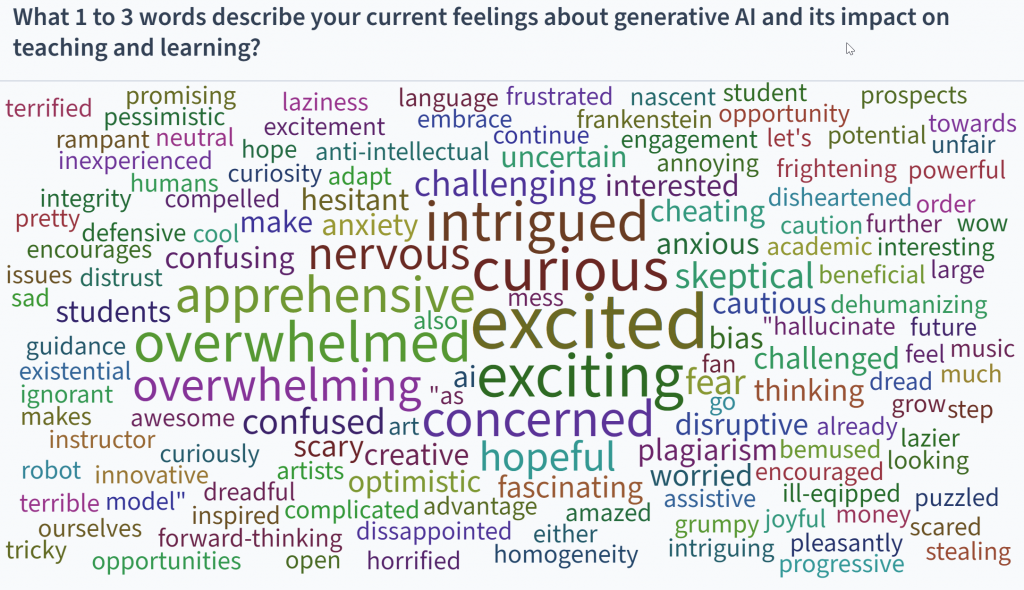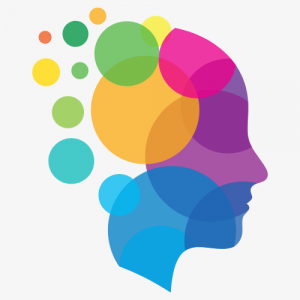by Liz Norell, associate director of instructional support
In our August 8 blog, we shared a preview of our September 8 workshop on supporting neurodivergent students, including the following definitions of key terms:
- Neurodivergent: a person with a brain that processes information in a way different from most individuals.
- Neurotypical: a person with a brain that processes information in a way typical of most individuals.
- Neurodiverse: a group of people with diverse ways of processing information, including those considered typical.
Because any learning space (or any group gathering, for that matter) includes people with diverse ways of knowing, processing information, and learning, all of these spaces will be neurodiverse. Meeting the needs of the neurodivergent, though, requires some awareness and intentionality.
Neurodivergent describes those who have some condition that impacts how their brains work; this might be a learning disability, attention deficit or anxiety disorder, obsessive-compulsive disorder, Tourette’s syndrome, bipolar disorder, and more.
In our workshop, we talked about the two most common neurodivergent conditions that show up in college classrooms: autism and attention-deficit/hyperactivity disorder (ADHD).
But first, a few notes about language. Some disability advocates prefer to use what’s called person-first language (e.g., a person with ADHD, a person with autism), whereas others prefer identity-first language (e.g., an autistic person, an ADHD person). Recent research suggests that in the United States, autistic adults largely prefer identity-first language (“I am autistic”) over person-first language (“I have autism”), whereas friends, family members, and professionals often expressed a preference for person-first language.
Within disability advocacy networks, the terms Asperger’s syndrome and high-/low-functioning are no longer used. We also use bipolar disorder to describe the condition, rather than the outdated manic-depressive terminology.
Autism
Many of us have a stereotype in our minds about what autism looks like. It’s usually a young boy who is somewhat withdrawn, doesn’t make eye contact, makes repetitive movements, and is hyper-focused on a few specific interests. There is some truth to that stereotype, but it’s far from a complete picture of how this neurodivergence manifests in all autistic people.
Things you might notice among students and colleagues who are autistic:
- Repetitive movements, like rocking, tapping, or picking at things
- Unusual eye contact (too little or too much)
- Overly eager desire to share information
- Anxiety during transitions or unexpected events
- “The lights are too loud”
- Needing something explained multiple times
- Meltdowns (including crying) for no apparent reason
- Fixation on minor details
- Seemingly distracted gaze out a window or at something on the wall
Autism is formally known as “autism spectrum disorder,” or ASD, because there is a wide range of symptoms that people with autism experience, both in type and severity. People with autism can be very successful in educational and professional contexts, particularly if those settings are supportive of neurodivergent people. There are many often-overlooked benefits to having an autistic brain, such as the ability to hyperfocus, exhibit unusual attention to detail, and creativity. The film Autism Goes to College and its companion podcast, which shares stories of neurodivergent college students, are terrific resources for those in higher ed.
ADHD
We also have a stereotype about what ADHD looks like. It’s usually (once again) a young boy who cannot sit still, talks quickly, and interrupts often. While this may be true, ADHD looks different across those who have this kind of neurodivergent brain. You might notice:
- Cannot seem to talk fast enough to get ideas out
- Bursts of speech
- Paralyzing reaction to negative feedback
- “A racecar brain with bicycle breaks” (a phrase coined by Dr. Edward Hallowell)
- Crave novelty, excitement, and challenge
- Work better when around someone else (“body doubling”)
- Appear to be “lazy” (but this is a mischaracterization)
- Difficulty sitting still–often fidgeting or needing to move
- Easily distracted by something interesting
One of my favorite writers about ADHD, a British woman who writes as “Authentically Emily” online, says that ADHD brains have an “interest-based nervous system,” as opposed to a neurotypical’s “importance-based nervous system.” Emily says that ADHD brains need at least one of the following four components to focus their attention on a specific task:
- Novelty: The task is new and exciting in some way.
- Interest: The person is deeply interested in the task or topic.
- Challenge: A sense of competition or inherent difficulty motivates attention.
- Urgency: The task needs to be done right now.
Lacking any of these four components, and a task might be impossible for a person with ADHD to focus their attention long enough to complete it.
This is why Karen Costa, who is working on a book for educators about ADHD, urges instructors to provide structure and deadlines for their students: “Many ADHDers need more structure, not less. We need more deadlines, not less.” (Listen to Karen Costa on the Teaching in Higher Ed podcast to learn more.)
Tangible steps to support neurodivergent students
Although neurodivergence shows up differently for each person, there are many things you can do as an instructor to help give your neurodivergent students equitable access to learning and success. Here are a few ideas:
- Openly welcome students of all abilities and neurotypes. Something as simple as a statement that says: “If you are disabled, I welcome a conversation to discuss your learning needs. I want to make sure you succeed in our course.” Don’t assume every neurodivergent student has a diagnosis or formal accommodations; the testing process to obtain a diagnosis is lengthy and costly, and the process of requesting formal accommodations is also time-consuming. Look for ways to design your course so students need as few accommodations as possible, and every student will benefit. (There are some good language examples here.)
- Manage the sensory input in your spaces. Look for ways to dampen the sensory overload many neurodivergent students struggle to manage. For example, can you dim the lights? Use indirect or diffuse lighting? If you have a whole-class discussion, discourage cross-talk (multiple people talking at once) to limit the auditory noise. Allow students to rearrange the furniture to meet their needs, such as physically separating their chair/desk to a corner or sitting on the floor if they like. Explicitly welcome things like doodling, knitting/crocheting, coloring, using fidget toys, or occasionally moving around the room.
- Communicate clearly and regularly. Share your expectations and directions multiple times and explicitly. Don’t assume your students can pick up on subtle cues or social norms. Limit your use of sarcasm or inside jokes—and if you use them, be over-the-top in signaling that you’re doing so. Define any subjective or unclear terminology in concrete terms (e.g., professional, collaboration, effectiveness, etc.). Provide written complements to any verbal directions and provide other ways to access important material outside of class.
- Ensure social interactions are intentional and clear. Normalize stimming behaviors in and out of class—by which I mean make it explicitly allowable, even encouraged. Clearly define the purpose and expected roles in any interpersonal interactions (such as think-pair-share or groupwork activities in class). Whenever possible, offer an option to work alone. Provide students with alternative ways (other than verbally) to communicate or interact with one another and with you.
- Create (flexible) structures. Hide or remove any unnecessary or unused features in Blackboard. Whenever a specific skill is needed (such as time management or completing a multi-stage project/assignment), provide how-to directions (or link to them). Scaffold assignments to create regular and meaningful deadlines. Assume good intentions and allow your students to make mistakes without debilitating penalties. (For more advice on this point, listen to this interview with instructional designer Cathryn Friel.)
If you want to learn even more, you can download the presentation deck or to reach out to Liz in CETL.
Student Disability Services can also provide meaningful support for faculty who have neurodivergent students in their classes—as most of us do.


